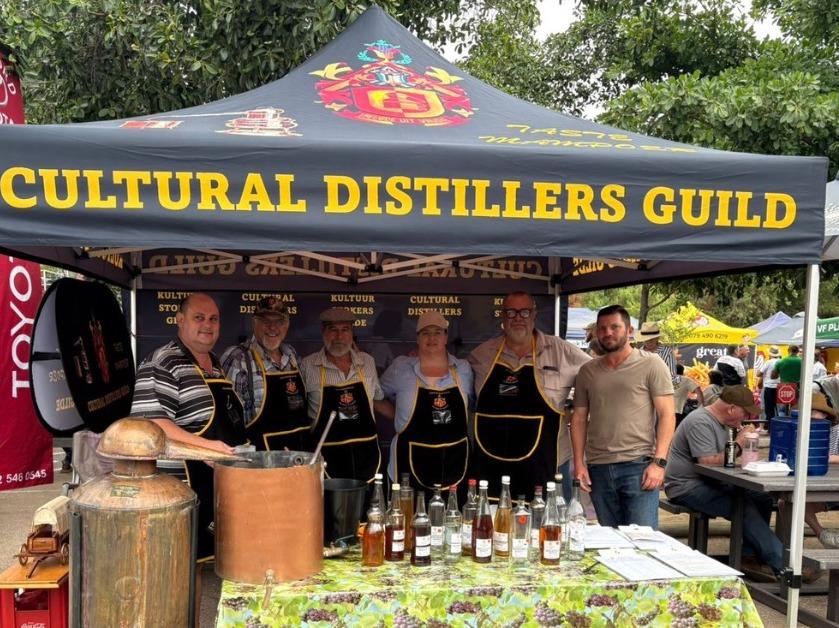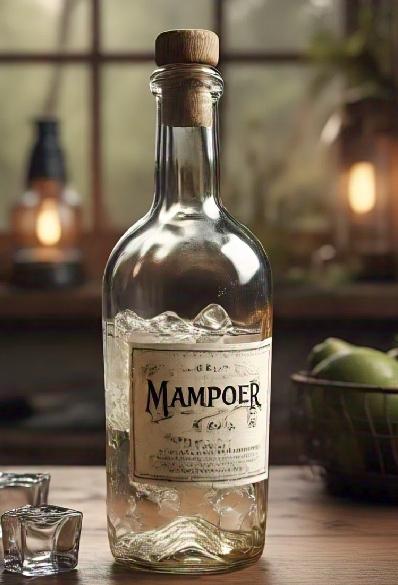
Disclaimer: Any views expressed by individuals and organisations are their own and do not in any way represent the views of The Heritage Portal. If you find any mistakes or historical inaccuracies, please contact the editor.
Mampoer occupies a distinct place within South Africa's material and intangible heritage, reflecting the agricultural adaptability of frontier communities and the resilience of craft traditions under shifting regulatory regimes. While widely recognised in popular culture, its documented history remains comparatively thin. Recent efforts by practitioners, including the Cultural Distillers Guild, are now helping to consolidate this legacy.
The Cultural Distillers Guild spreading the word
The introduction of copper pot-still technology to the Cape by Dutch and Huguenot settlers in the mid-1600s laid the groundwork for a distilling tradition. Early production centred on wine-based brandewijn, but as Trekboer settlement extended inland, distilling practices adapted to the realities of frontier farming. Fruits that thrived in these environments - peaches, apricots, plums, and later marula - became the foundation of a rural fruit-spirit culture that would eventually give rise to what we now recognise as mampoer.
Though formal documentation is limited, oral histories and regional accounts suggest that this frontier distilling developed through more than the transfer of European techniques alone. In areas bordering the former Pedi territories, settlers learned from local communities about fruit selection, fermentation timing, storage techniques, and the seasonal rhythms governing indigenous crops. This convergence of European distillation and African agricultural expertise represents an early form of practical, collaborative knowledge exchange that remains insufficiently recorded in the archival record.
The popular explanation for the name “mampoer” links it to Kgosi Mampuru II, the Pedi leader executed in 1883 after resisting the South African Republic. While historians generally regard this etymology as folklore rather than proven linguistic fact, its persistence is culturally meaningful. It reflects the intertwined political, social, and frontier contexts in which rural distilling evolved and points to the symbolic power that mampoer acquired within local storytelling and identity. Writers such as Herman Charles Bosman added to the cultural footprint of mampoer through their depictions of life in the Groot Marico region. While not technical records, such literary works provide valuable insight into the social settings in which home distilling was practised, shared, and mythologised.
The 1928 Liquor Act fundamentally altered the trajectory of traditional distilling. By prohibiting home distillation outright, it pushed mampoer into an informal sphere. For much of the 20th century, fruit-spirit production continued quietly across farming communities, with techniques refined and transmitted orally. This period created South Africa’s own parallel to American moonshine culture, but one firmly rooted in agricultural practice rather than romanticised outlawry.
A shift began in the mid-1960s, when incremental regulatory adjustments opened limited avenues for licensed small-scale production. By the time key legislation, including the Customs and Excise Act of 1964 and the Liquor Products Act of 1989, came into full effect, traditional distillers faced a new set of complexities: the law no longer prohibited distilling outright, but its industrial orientation made compliance difficult for craft-based producers who were operating not as commercial enterprises but as custodians of cultural practice.
The formation of the Cultural Distillers Guild in 1983 marked a turning point in the formal preservation of mampoer knowledge. Established by practitioners determined to safeguard a tradition at risk, the Guild created a structured environment for education, responsible practice, and heritage transmission. Its annual competition has become a key mechanism for maintaining standards. Entries are evaluated not only on technical quality but also on provenance, distillation technique, and fidelity to traditional methods. This emphasis on cultural authenticity has helped reposition mampoer from a niche regional custom to a recognised South African craft practice.
A beautifully presented bottle of Mampoer
The Guild has also initiated systematic documentation efforts - oral history interviews, recipe archiving, and the development of a Heritage Register for Traditional Distillers. These projects, drawing on first-hand practitioner knowledge, represent some of the most substantive contemporary attempts to capture the evolving history of mampoer and align their work with the principles of the National Heritage Resources Act (1999) regarding intangible cultural heritage.
Today, as global interest in craft spirits grows, mampoer offers a case study in the endurance of localised knowledge systems under social and regulatory pressure. Its history demonstrates how specialised craft skills can persist across generations - even through periods of prohibition - when practitioners view their work not merely as production, but as cultural inheritance. Mampoer represents a heritage practice that bridges frontier farming, indigenous knowledge, craft science, and legislation, while remaining rooted in the lived experience of rural communities. The continuing work of the Cultural Distillers Guild, combined with renewed scholarly and heritage interest, offers an opportunity to ensure that this distinctive element of South Africa’s distilling legacy is documented, understood, and preserved.
Hannes Pieterse is a member of the Culture Distillers Guild of South Africa, working as a heritage researcher and advocate for traditional distilling. His work focuses on documenting and promoting the craft practices that underpin South Africa’s fruit-spirit traditions.
Comments will load below. If for any reason none appear click here for some troubleshooting tips. If you would like to post a comment and need instructions click here.


